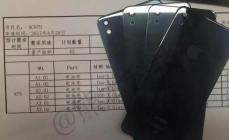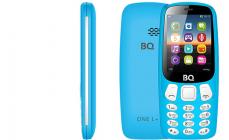When trying to install Windows OS on your computer, a user may encounter the error “The required driver for the optical drive was not found.” At the same time, it very often happens that there is no “optical drive” on the PC at all, and the OS installation itself is done from a flash drive. In this article I will tell you what the required CD/DVD drive device driver is missing error is, why it occurs and how to fix it.
The main reason for the problem in question “the required driver was not found” is the inability of the Windows Preinstallation Environment (Windows PE - Windows Preinstallation Environment) to recognize the external USB drive from which Windows is installed. The Windows PE preinstallation environment itself is built into the kernel of the Windows 7 operating system and is used to prepare the installation of this operating system. Therefore, if it is impossible to recognize the USB drive, the system generates an error with the above text and the installation of the operating system is terminated.

Therefore, among the reasons for this problem, I would name the following:
- using a USB 3.0 connector instead of USB 2.0 to connect a flash drive;
- poor-quality recording of the Windows OS installation image on CD (DVD);
- use of custom operating system builds;
- sudden removal of the installation disk from the drive;
- damage to the ISO file itself;
- low quality of the CD (DVD) disc itself (often in the case of a “no name” manufacturer);
- The CD (DVR) drive is inoperative (in particular, dust on the drive lens, problems with the device board, and so on).
How to fix the "required optical drive driver not found" error
The algorithm for how to get rid of the problem “the required driver for the optical drive was not found” is as follows:

Video instructions for fixing the error
Above, I discussed the reasons and solutions to the problem of the lack of necessary drivers for CDs (DVDs). In most cases, the main reason for the dysfunction “The required driver for the drive was not found” is the use of a USB 3.0 connector instead of the usual USB 2.0. To fix this problem, you just need to insert your installation flash drive into the appropriate USB 2.0 connector. After this, in most cases, the problem is effectively resolved.
In contact with
When installing Windows 10, 8 and Windows 7 on a computer or laptop, the user may encounter errors “The required media driver was not found. It could be a DVD drive, USB drive, or hard drive driver" (during installation of Windows 10 and 8), "The required driver for the optical drive was not found. If you have a floppy disk, CD, DVD, or USB flash drive with these drivers, insert this media" (when installing Windows 7).
The text of the error message is not particularly clear, especially for a novice user, because it is not clear what kind of media we are talking about and one can assume (incorrectly) that the problem is in the SSD or the new hard drive on which the installation is taking place, but this is usually not the case and the point is different.
Basic steps to fix the “Required media driver not found” error, which will be described in detail in the instructions below:
- If you are installing Windows 7 and doing it from a flash drive, connect the USB drive to the USB 2.0 connector.
- If the distribution disk is recorded on DVD-RW, or has not been used for a long time, try re-burning a boot disk with Windows (or better, perhaps, try installing from a flash drive, especially if you have doubts about the full functionality of the drive for reading disks).
- Try burning the installation USB flash drive using another program. For example, relatively often (for unclear reasons) the error “The required driver for the optical drive was not found” is seen by users who burned a USB drive in UltraISO.
- Use another USB drive, delete partitions on the current flash drive if it contains several partitions.
- Download the Windows ISO again and create an installation drive (the problem may be a damaged image).
The root cause of the error The required media driver was not found when installing Windows 7
The error “The required media driver was not found” during the installation of Windows 7 is most often caused (especially recently, as users update computers and laptops) by the fact that the bootable flash drive for installation is connected to the USB 3.0 connector, and the official OS installation program does not have built-in support for USB 3.0 drivers.

A simple and quick solution to the problem is to connect a flash drive to a USB 2.0 port. Their difference from 3.0 connectors is that they are not blue. As a rule, after this the installation occurs without errors.

More complex ways to solve the problem:
- Write drivers for USB 3.0 to the same flash drive from the official website of the laptop or motherboard manufacturer. Provided that these drivers are there (they may be part of the Chipset Drivers), and they must be written in unpacked form (i.e. not as an exe, but as a folder with inf, sys and, possibly, other files). During installation, click “Browse” and specify the path to these drivers (if the drivers are not on the official websites, you can use the Intel and AMD websites to search for USB 3.0 drivers for your chipset).
- Integrate USB 3.0 drivers into the Windows 7 image (this requires a separate guide, which I don't have at the moment).
"The required optical drive driver was not found" error when installing from DVD
The main cause of the error “The required driver for optical disks was not found” when installing Windows from a disk is a damaged disk or a DVD drive that does not read disks well.

At the same time, you may not see any damage, but on another computer installation from the same disk occurs without problems.
In any case, the first thing you should try in this situation is to either burn a new Windows boot disk or use a bootable USB flash drive to install the OS. The original images for installation are available on the official Microsoft website (instructions on how to download them were given above).
Using other software to burn a bootable USB drive
Sometimes it happens that a message about a missing media driver appears when installing Windows 10, 8 and Windows 7 from a flash drive recorded by a specific program and does not appear when using another one.
Try:
Problems with bootable USB flash drive
If the points indicated in the previous section did not help, the problem may be in the flash drive itself: if possible, try using another one.
And at the same time, check whether your bootable flash drive contains several partitions - this can also lead to such errors during installation. If it does, delete these sections.
Additional Information
In some cases, the error can be caused by both a damaged ISO image (try downloading again or from a different source) and more serious problems (for example, malfunctioning RAM can lead to data corruption when copying), although this rarely happens. However, if possible, it is worth trying to download the ISO and create a drive to install Windows on another computer.
The official Microsoft website also contains its own instructions for fixing the problem:
Sometimes it happens that when you try to install the seventh version of the Windows operating system (and only this version), at a certain stage, instead of starting the installation, the system displays a message stating that it cannot find a driver for the optical drive. Windows 7 is a rather capricious OS in this regard. But the saddest thing is that installation can be done from a regular flash drive, and there is no optical drive at all! Where is the logic? This issue requires a deeper and more careful study, so let’s look at what can be done if the necessary driver for the optical drive is not found (we take Win 7 as a basis).
Previously, everyone complained about Vista: it looked absolutely crude and unfinished, but then, as it turned out, it was the turn of Vista, which was also not immune to various kinds of shortcomings, which appeared, to the chagrin of many users, even at the installation stage. There are not many solutions to this problem, but some of them can improve the situation. First, let’s figure out why this error appears, and only then will we make a decision on how to deal with it.
The essence of the error “The required driver for the optical drive was not found” (Win 7)
Actually, it’s not even a matter of the installation distribution, although it sometimes plays an important role. The so-called pre-installation environment Windows PE (Pre-installation Environment), which is responsible for starting the installation and is built into the core of the system, is to blame for everything.
And the appearance of a notification that the required driver for the disk drive was not found indicates that there are problems with it. As a rule, it simply cannot recognize the USB drive, considering it an optical disk (even though there is no drive). But sometimes this can actually apply specifically to optical drives (it will become clear why later). And this situation may not always apply specifically to PE, since you can find quite a lot of completely different cases when this environment, by and large, has nothing to do with this problem.
Possible causes of the problem
As for the reasons why a notification is issued that a driver for a laptop disk drive (of any type, since a USB port is also a disk drive) or a desktop PC is missing, there can be quite a few, but the most common ones usually include the following:
- incorrect connection of the drive;
- using USB 3.0 without support from a flash drive;
- sudden removal of a disk or flash drive (or loss of contact in the port) during the installation process;
- installing the system from a disk with custom firmware;
- incorrectly recorded ISO image;
- corrupted ISO image;
- damaged or low-quality media (disks with the noname attribute);
- drive clogged with dust;
- drive or port failure.
Based on the above reasons, we will look for a solution to fix the problem. All of them are quite simple and do not require any special knowledge.
Checking the drive connection
First, let's look at how to connect a drive if we are talking about an optical drive. Everyone knows that it needs to be inserted into a special compartment on a stationary terminal, laptop, or use an external connection. But installing the drive is not the most important thing. The main thing is to correctly connect the cables to it.

Please note that the cables for the hard drive and drive are the same, but it's all about the Master/Slave jumper. Remember: the hard drive is always connected only through the Master (naturally, if there is only one hard drive in the system), and the drive - exclusively through the Slave. Along the way, pay attention to the interface used (IDE, SATA, etc.) and the position of the jumper.
It’s clear how to connect the drive. But why then does nothing happen when you insert a disk into it? In theory, when the reading process begins, the LED indicator on the drive should blink, but the drive shows no signs of life.
Activating the device in BIOS
The problem here may be that this device is simply not activated in the primary system, so it is not available to the primary system (an error related to the fact that the driver for the DVD drive is missing may also be issued in this case).

To check when restarting a computer or laptop, you should enter the BIOS parameters, and then check in the equipment section whether the drive is visible. If yes, you may need to enable it (select Enabled in the device line). After this, you can reboot and look at the result.
Problems reading optical discs
But it often happens that the drive is recognized and active, but the disk is not readable. The system again displays a notification that the driver for the CD drive is missing.
In this case, the problem may be that dust has gotten onto the optical lens in the drive itself or it has simply failed. But most often the problem is caused by low-quality media. In such a situation, you can simply try to burn the image to another disk and try to install from it.
On the other hand (and this is confirmed by a fairly large number of users and specialists), most often the message that the required driver for the drive was not found is received by all those who recorded the image in the UltraISO program. Moreover, this applies equally to optical discs and USB drives. Why this happens is not known for certain, but the fact remains.
Another type of problem, when the system reports that the necessary driver for the disk drive was not found, is a damaged installer image. In this case we are talking about a situation where it was downloaded from the Internet. Perhaps you should find another resource and download the image from there, and then burn it to the desired media.
The same, by the way, applies to unofficial custom repacks. In theory, during the installation process the system installs the necessary drivers from its own database automatically, but in such firmware the necessary driver may not be present as such. The solution is to download the official distribution (if activation is required, you can always use the tiny KMSAuto Net utility, although this is illegal).

Finally, the reason for the message that the required driver for the drive was not found may be a completely trivial situation when it was performed at maximum speed. It is believed that the optimal option for recording is the minimum speed supported by both the drive and the optical media itself (it is best to use 2x, if possible, 1x or at least 4x, but not higher).
Checking functionality in Device Manager
But perhaps the drive itself does not work for some reason. In such a situation, you can simply connect it to another computer with an already installed system and check its performance there. If the OS does not install the appropriate software, in the Device Manager (devmgmt.msc in the Run menu), the drive will be marked yellow or labeled as an unknown device. In this case, there is nothing else left to do except download the required driver.
Where can I find the driver for the floppy drive?
This is where problems begin for many people. If the disk drive is detected in the system, but the driver is missing, you need to not only find it on the Internet, but contact the manufacturer’s official resource. It’s not worth downloading it from anywhere, since you can easily catch a virus.
But there are so many drivers on the manufacturer’s website that even for one device or similar devices there can be dozens of them. To select exactly what you need, in the “Device Manager” you should use the properties section, called up via RMB on the drive line, and go to the details tab, select the equipment ID in the drop-down menu at the top and use the longest line containing DEV identifiers for a precise search and VEN. In principle, you can also go to special sites that are created to find drivers using this data. After downloading, the driver along with the image will only need to be written to a USB drive and installed from it, and if an error occurs, indicate the path to the driver on the removable device.
from USB stick
But even here the user faces troubles. A driver missing message may appear even in this case.
First of all, try simply removing the flash drive from the port and inserting it back (you never know, maybe the contact is lost). If this doesn't help, use a different port. Finally, look at which port the drive is inserted into (Windows 7 does not support USB 3.0). The inside of the port itself is usually painted blue.
BIOS settings and options
If this option does not work, you must use the BIOS again. Here we are interested in several important settings.

First of all, the HDD operating mode must be switched to AHCI (without this, installing any system is simply impossible).

If your computer actually has a USB 3.0 port, you need to temporarily disable it in the settings. In addition, for USB, you need to deactivate the XHCI mode, and set the USB emulation parameters to Auto.

After completing all the steps, of course, you need to save the changes made (usually F10 + Y or the “OK” button is used), then boot from the removable media and install again, not forgetting to set the flash drive first to boot.
This technique, judging by the same reviews on a variety of forums, works flawlessly. In the end, you can simply completely format the media and change the program for recording the installation image. You never know...

Sometimes it is completely impractical to perform the above settings. You just need to reset all parameters to the factory state and try the installation again. Who knows, maybe this option will give the desired result. In any version or modification of the BIOS, you can find a line like Load Setup Defaults or something similar, use it and agree to change the parameters.
As a last resort, if nothing works at all with the BIOS settings, and the driver missing message appears again and again, you can try the latest solution, which is to download and install newer firmware for the primary I/O system. True, if in some systems the update item is already built into the shell itself, there will be no problems. But for all other modifications, you will have to download and install the firmware yourself, but you should be extremely careful, since if the firmware is inappropriate or even if there are power outages during its update, the consequences can be catastrophic.
Problems with the disk drive in the installed system?
But let’s assume that the system was installed from a USB device. It happens that users complain that the disk drive is not visible in Explorer, and they immediately begin to panic. It's not worth it because this is a normal situation. The fact is that some models of optical drives have accompanying software that hides the drive in file managers until the disc is inserted into it.
If the drive is not visible even with a disk inserted, you should check its definition in Device Manager. If it is not there either, you need to expand the list using the display of hidden devices. Perhaps the driver itself was installed incorrectly. To correct the situation, you will have to either update the driver (in the RMB menu or on the corresponding tab by clicking the button of the same name), or remove the driver or device completely, and after Windows reports that new hardware has been found, but an error occurred during the driver installation process (such also happens), install the corresponding software yourself, indicating as the source the same flash drive on which the driver was recorded in the previous stages. In the end, you can simply copy it to your hard drive and select the location there.
However, these are all standard situations that can be corrected quite simply. But it may also be that the drive in the system is working properly, but for some reason the drive does not read discs. What to do in this situation? There may be several options: a damaged disk, a dusty or broken drive (although visible in the system). In the first case, just insert normal media and look at the result. In the second, you can blow out the drive a little, so to speak, or remove dust and dirt from the main exit pocket. If none of this has any effect, the drive will have to be repaired or even replaced altogether. At the same time, you should not buy any specific models for which drivers may not be in the system database, but give preference to common brands. The system will install what it thinks is the most suitable driver, but in fact the drive will not be able to operate under its control.
Brief conclusions
So, these are all the situations that may be associated with errors indicating the absence of the necessary drivers for the drives. As you may have already noticed, this problem does not apply only to DVD drives, since even if they are absent, it can appear when trying to install Windows 7 from USB drives or even external HDDs, which are also classified by the system as disk drives.
It is believed that if there is no optical drive, the most effective solution is to set the above parameters in the BIOS, plus use only the 2.0 interface for USB, since the third modification is not supported in the “seven”.
If we are talking exclusively about optical drives, the most likely reasons may be incorrect connections and problems with installation images or unofficial distributions, not to mention, of course, purely technical failures.
Accordingly, when such problems are identified, one or more of the above solutions must be applied. At least one proposed technique will help.
Installing the Windows operating system is becoming easier every year, and Microsoft provides all the necessary tools so that users can independently burn its image to a drive and carry out the installation process. During installation, you must follow the instructions that are displayed on the screen, but the installation does not always go smoothly, and sometimes you may encounter various errors. One of the problems that may arise when installing Windows from a flash drive or disk is the lack of the necessary driver. Depending on the version of Windows that is being installed, various errors are displayed:
- Windows 7: "A required driver for the optical drive was not found." If you have a floppy disk, CD, DVD or USB flash drive with these drivers, insert this media";
- Windows 8, Windows 8.1 and Windows 10: “A required media driver was not found. This could be a driver for a DVD drive, USB drive, or hard drive."
These errors are identical and differ only in description. Accordingly, their elimination methods are also the same. Let's look at what to do if the required media driver is not found when installing Windows.

The required media driver was not found when installing from a flash drive
The most common problem that causes the “Required driver not found” error to appear is connecting a flash drive to a motherboard connector with USB 3.0 protocol. This is due to the fact that the Windows 7 operating system installation program cannot work with the USB 3.0 connector. This problem is not relevant for installation programs for Windows 8 and Windows 10.
There are three ways to solve this problem that will allow you to install Windows 7 when you receive a message that a required driver is missing:

Required media driver not found when installing from disk
 If the Windows operating system is installed from a disc - CD or DVD, then the error in question may also occur. Here the reason is also trivial - damage to the drive from which the installation is taking place. This could be a crack, scratch, chip or other defects that make the information from the disk difficult to read.
If the Windows operating system is installed from a disc - CD or DVD, then the error in question may also occur. Here the reason is also trivial - damage to the drive from which the installation is taking place. This could be a crack, scratch, chip or other defects that make the information from the disk difficult to read.
Important: This error does not depend on the version of Windows recorded on the disk, and it can occur when installing any variation of the operating system.
It is worth noting that in some cases the error “The required media driver was not found” when installing from a disk may not occur on all computers. This is most often due to the speed of the drive. By rotating the disk faster, in some cases it is possible to read information from it without errors, even if it has some damage.
To solve the problem, you will need to burn the image of the Windows operating system to another disk or flash drive.
What to do if the required media driver is not found when installing Windows
If the tips above did not help solve the problem, and an error occurs when you try to install the operating system from a flash drive or disk, we recommend trying the following steps:

It is extremely rare that an error may occur when writing data to the drive if there are problems with the computer's RAM. If none of the above tips help, try recording a system image from another computer.
Installing Windows can sometimes be a bit of a hassle. This applies not only to the new version 10, but also to the already proven software. Seven also sometimes gives out surprises that you obviously don’t expect to receive. One of these unpleasant surprises is when Windows asks for device drivers right during installation. Typically a message like this looks like this:
The essence of the problem is clear: the operating system installation does not find the driver for the drive, so it cannot continue the process itself. If Windows does not see any devices, then a real headache begins for the average user. But the point is that with this message everything is much simpler. There are typical solutions to get out of this situation. Just choose one of them, perhaps it will save you from such an unpleasant situation.
Crooked assembly
Today you can find a huge number of installation images on the Internet. We have already discussed how to download and install such an image. On the Internet, many hobbyists post Windows versions XP, 7, 8 and 10. When downloading such virtual media, the user assumes full responsibility for the security of his computer. In most cases, nothing serious happens. It’s just that some devices or components cannot be found on the image during installation. You have to install the operating system 10 times to understand: the quality of the downloaded installation media leaves much to be desired.

Worn disk
It is extremely difficult for the drive to read files from the installation media. Optics require a smooth and clean surface. It’s no wonder that for this reason, today Windows 10 is already delivered to your computer via the Internet. Physical disks are fragile and can be easily scratched or chipped. Just one such damage can force the computer to go through the same segment for a long time. As a result, drivers for the device will not be found, and the same error will appear on the screen. Yes, that's exactly how it goes:
Poor-quality installation media may cause an error when no drivers are found during installation.
In this case, you need to use only new write-once discs for the drive. Reusable discs are more convenient for repeated use, but the recording quality on them is constantly decreasing. Considering that most users have long abandoned disks, the use of a drive during installation requires increasingly high quality media. Such devices go out of circulation, become obsolete and no longer cope with their tasks as well as their direct competitors. After all, there is no such problem on USB memory cards due to the solid-state structure.
Wrong connector
Let's say Windows 7 is installed the same way as its modern descendant version 10, via a USB device. In this case, if an error occurs when the drivers are not found, we can say that the wrong connection connector is used. As strange as it may sound, the external contacts of a computer may be the same, but in their properties they can be very different. It's like Windows 7 and 10 - the principle of operation seems to be the same, but the essence is different. There are two standards for USB connectors: USB 2.0 and USB 3.0. In short, version 3 is faster. Unfortunately, the Windows 7 installation image does not provide drivers for this standard. That's why the computer doesn't find them. In this case, we can advise you to plug the USB drive into the 2.0 connector so that the installation can continue.

True message
It may also be that Windows 7 actually reports the correct information and simply cannot find the drivers on the installation media. In such a situation, you should insert a disk with drivers from the system unit components into the drive. Next, click on the Browse button and show the installation the path to the necessary files.
But, despite such problems, users still continue to use sevens. These operating systems are convenient, and all their errors have already been worked out, which has not yet been done on the 10th generation. Specific differences between versions 7 and 10, as well as .
(Visited 26,013 times, 1 visits today)






